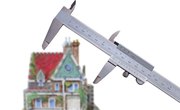The process of shopping for a home loan should involve comparing multiple types of loans. Selecting the right mortgage can save you a great deal of money, just as choosing one that's inappropriate for your situation can be costly. A 7/23 loan includes rate adjustments and a possible balloon payment, both of which borrowers need to understand before signing up.
Terms
A 7/23 loan is an adjustable rate mortgage, or ARM, with a balloon payment option. The 7/23 name means that the loan has a fixed rate for the first seven years. After that, the lender can adjust the interest rate based on an index of economic factors. This is the only time the interest rate can change, and it will remain at that level for the remaining 23 years, or until the homeowner refinances by getting a new mortgage to replace it.
Outcome
Homeowners can elect to refinance a 7/23 loan after seven years, eliminating the possibility or a large interest rate increase. Under certain conditions named in the loan agreement, such as the homeowner missing a payment or taking out a second mortgage, the 7/23 loan becomes a balloon loan. This means that after seven years, the entire balance of the mortgage comes due. If the borrower can't afford to pay in one payment what would otherwise have taken 23 years to pay off, she can refinance with a new loan.
Risks
A 7/23 loan carries several risks for borrowers. Those who keep the loan for more than seven years are likely to see their interest rate rise sharply, which means higher monthly payments. Homeowners who trigger the balloon option will face a choice between one very large payment or a new loan based on current interest rates when the seven-year fixed period ends. Since making a balloon payment on a 7/23 loan is impossible for many borrowers, taking on a higher interest rate may be unavoidable.
Uses
A 7/23 loan is most useful for certain homeowners who are largely shielded from its risks. This includes borrowers who only expect to own the home for less than seven years. By selling before the fixed rate expires, homeowners can take advantage of the low introductory rate and move on to a new home before the rate increases. The introductory rates for 7/23 loans are usually lower than the rates for 30-year fixed mortgages, which are another option for homeowners who plan to keep their homes for many years and want the stability of an unchanging rate and predictable monthly payment.
References
- Consumer Financial Protection Bureau. "What Is a Balloon Payment? When Is One Allowed?" Accessed March 15, 2020.
- Consumer Financial Protection Bureau. "What Is Negative Amortization?" Accessed March 15, 2020.
- Experian. "How Does Refinancing a Mortgage Work?" March 15, 2020.
- Federal Reserve History. "Subprime Mortgage Crisis." Accessed March 15, 2020.
- IRS. "Recourse Vs. Nonrecourse Debt." Accessed March 15, 2020.
Resources

